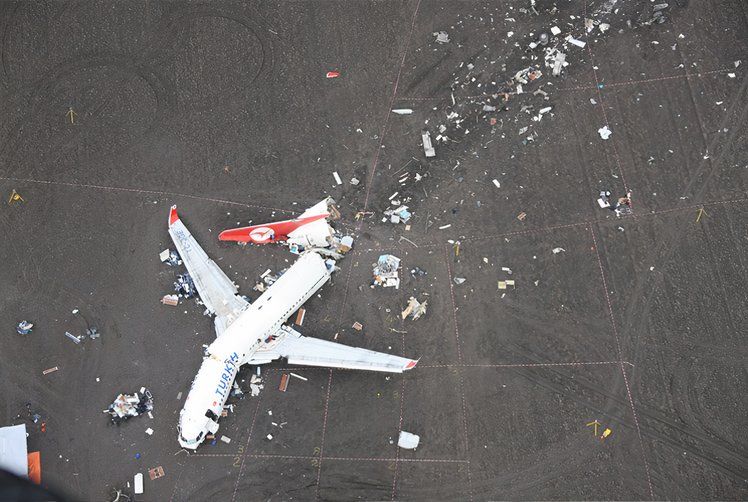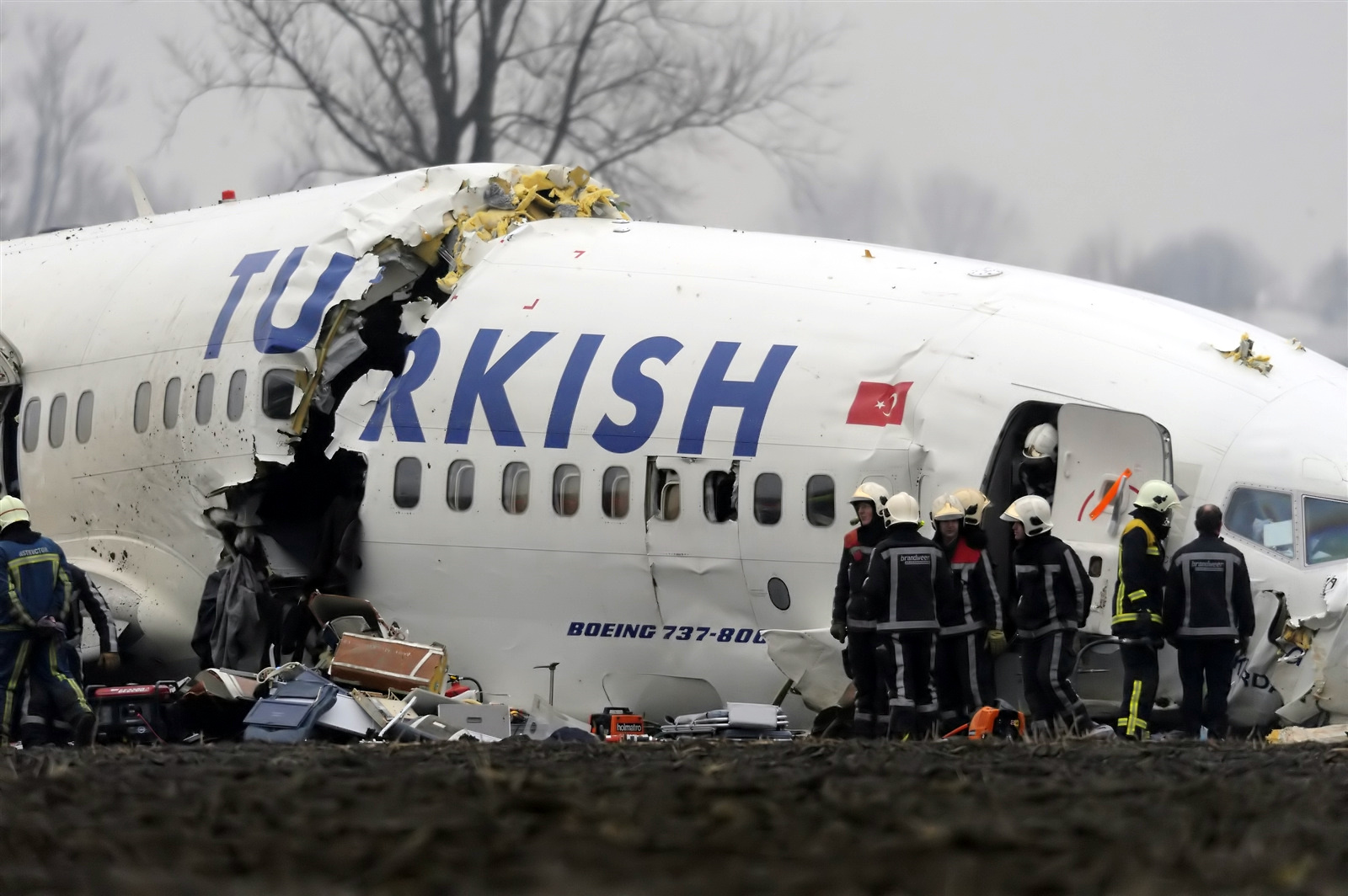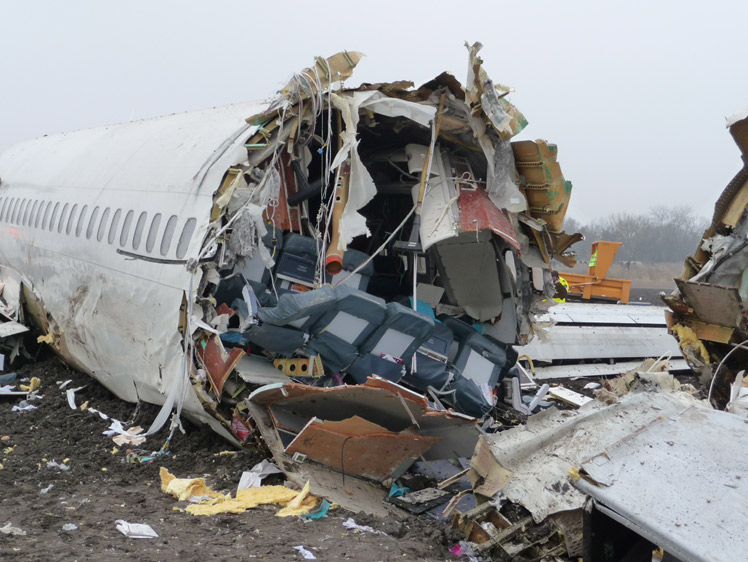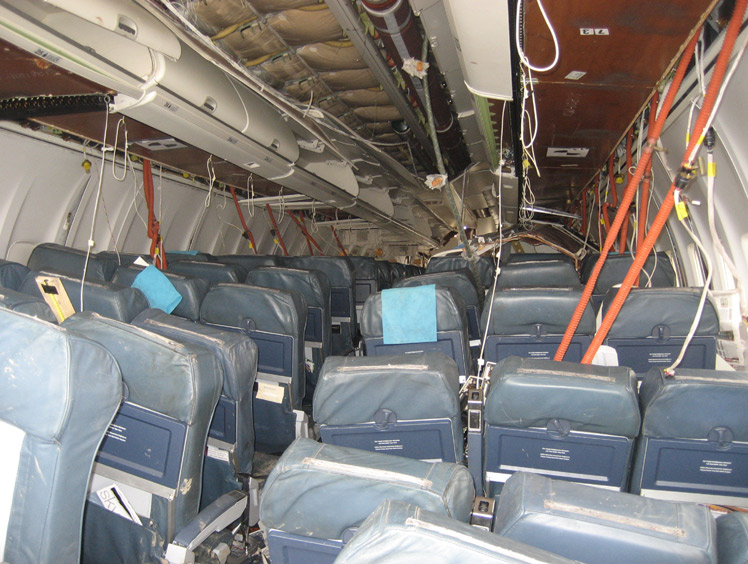
On February 25th, 2009, Turkish Airlines Flight 1951, a Boeing 737-800 en route from Istanbul to Amsterdam, descended from the skies into disaster. The flight, seemingly routine, ended in tragedy just under a mile from the runway at Schiphol Airport.
While 128 passengers and seven crew members boarded the aircraft expecting a standard international trip, none knew that the plane carried a hidden technical flaw and a perfect storm of human factors that would turn a routine approach into one of aviation's most chilling crashes.
What began as a seemingly normal descent spiraled into confusion and panic as the aircraft, without warning, stalled at only 420 feet above the ground. In mere seconds, a combination of flawed instrument data, missed warnings, procedural missteps, and a subtle but deadly automation trap would send the aircraft plunging into a muddy field, splitting it into three parts and ending nine lives, including all three pilots in the cockpit.
The aircraft, a seven-year-old 737 purchased by Turkish Airlines in 2002, was not just flying under standard operations but was also part of a line training flight. At the helm was an experienced captain and training officer, accompanied by a new first officer undergoing his seventeenth flight with the airline.

A third, younger safety pilot joined them, tasked with overseeing the flight deck during this transitional training phase. Unknown to them, the aircraft’s left radio altimeter had failed shortly after departure.
The left-hand system began transmitting a faulty signal—reporting the plane’s altitude as minus eight feet, a dangerous misreading that would soon prove catastrophic.
Crucially, this erroneous data would be fed directly into the autothrottle system, which, in autopilot dual channel mode, relies on the left altimeter for key decisions, including when to idle the engines during landing flare.
As the aircraft approached Amsterdam, Dutch air traffic control, known for its busy and tightly choreographed arrivals, vectored the flight onto a tight base leg for runway 18R. The plane, slightly high on the glide path, required rapid descent to intercept the instrument landing system.
Amid this pressure, the inexperienced first officer made a small but consequential mistake: he switched autopilot command modes in the wrong order, causing a brief disconnection. Though re-engaged, this glitch signaled to the autothrottle system that the aircraft was about to land—even though it was still over five miles from the runway and several hundred feet too high.

Interpreting the faulty altimeter’s data as truth, the autothrottle cut engine power to idle, as if preparing for flare. The flight crew, overwhelmed by a flurry of warnings and distraction from radio communications, failed to notice this silent betrayal by the aircraft’s automation.
From that point on, the aircraft’s airspeed began bleeding away. Yet the pilots remained unaware that the engines were essentially in idle and not producing enough thrust to sustain level flight or descent on glide slope.
They were also struggling with intermittent landing gear warnings, likely triggered by the faulty radio altimeter, adding confusion during a critical phase. At 1000 feet, the crew passed through the "landing gate," a procedural check confirming whether the aircraft was properly configured for landing. It wasn’t.
The flaps weren’t fully extended, the landing checklist wasn’t complete, and the thrust remained at idle. Yet no go-around was initiated. In Turkish Airlines’ standard operating procedures, only the captain had the authority to declare a missed approach. On this day, he didn’t.
At just 500 feet, the aircraft’s angle of attack was dangerously high—its nose pitched up to compensate for the dropping speed, a textbook lead-up to a stall.

Then, the stick shaker activated. The flight had entered a pre-stall warning condition. The safety pilot shouted “speed, speed, speed,” and the first officer, fresh from simulator training, instinctively pushed the nose down and added some thrust.
But in a confusing moment, the captain took over the controls. As soon as he did, the autothrottle—still misled by the faulty altimeter and still engaged—retook command, pulling the thrust levers back to idle once again. That sealed the aircraft’s fate.
Only seconds later did the captain realize what had happened and disconnect the autothrottle, but it was far too late. With engines spooling up slowly and the plane in a deep stall, recovery was impossible from just 400 feet.
The Boeing slammed tail-first into the ground in a muddy field 0.9 nautical miles short of the runway. The fuselage snapped into three pieces. The engines were torn from the wings and thrown hundreds of meters forward.
The cockpit was crushed. In the chaos, five passengers, one cabin crew member, and all three pilots lost their lives. The rest, though injured, survived the harrowing crash—many pulled from the wreckage by emergency responders within minutes.

Investigators from the Dutch Safety Board quickly launched a deep inquiry. What they uncovered revealed a chilling chain of errors and system weaknesses. The faulty radio altimeter was identified as a key trigger, a known problem on Boeing 737NG aircraft that had been reported multiple times before but never fully addressed.
Boeing had advised airlines not to use the autothrottle during approach if a radio altimeter failure occurred—but this guidance was buried in technical dispatch documentation, not in the inflight quick reference handbook, leaving flight crews uninformed mid-air.
Moreover, the airline’s standard procedures failed to call for go-arounds in situations where automation errors or unclear configurations presented threats. Compounding the tragedy was the fact that Dutch air traffic control had vectored the aircraft too close to the runway for a stabilized approach without notifying the crew—an action contrary to internal protocols requiring advanced notice for short approaches.
The final report laid blame across several fronts. Turkish Airlines’ cockpit crew had failed to properly monitor airspeed, failed to notice the thrust level, and failed to execute a go-around at the appropriate point. Boeing was criticized for not resolving persistent and unpredictable radio altimeter malfunctions that had been reported across fleets worldwide.
Air traffic control was faulted for putting undue pressure on the flight with a tightly packed approach vector. The report sparked fierce debate, with both Boeing and Turkish Airlines submitting objections to the findings, but the facts were undeniable.

A faulty altimeter—a piece of equipment worth a few thousand dollars—had triggered a cascade of failures that no one in the cockpit or in Seattle had anticipated, ultimately bringing down a state-of-the-art jetliner just seconds from touchdown.
In the aftermath, global aviation authorities mandated changes. Stall recovery training was expanded to include low-altitude scenarios and final approach stalls, not just high-altitude clean configurations. Airlines revised their manuals to emphasize earlier and more decisive go-around decisions.
Boeing came under renewed scrutiny for how it communicates intermittent technical issues to pilots. For pilots worldwide, Turkish Airlines Flight 1951 became a haunting reminder that blind trust in automation can be deadly. Systems fail. Warnings are missed.
And in the end, it's the smallest human decision—delayed, distracted, or dismissed—that often makes the difference between a safe landing and a catastrophe.
The passengers of Flight 1951 left Schiphol with more than broken bones and bruises. They carried with them the horror of a cockpit frozen in shock, a plane silently surrendering to gravity, and the brutal truth that in aviation, complacency and chaos never mix.
For the families of the dead, the pain never truly left. But their legacy became change—change written into checklists, training syllabi, cockpit SOPs, and Boeing engineering memos. And perhaps, in that, the loss was not in vain.

-1751776382-q80.webp)
-1751104165-q80.webp)
